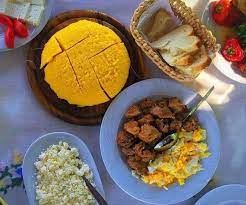Introduction: Where to Find Resources on Moldovan Cuisine?
Moldovan cuisine is a unique blend of Eastern European and Mediterranean flavors, influenced by the country’s history and geography. If you’re interested in exploring this rich culinary tradition, there are several resources available online and offline. From cookbooks and food blogs to cooking classes and cultural events, you can learn more about Moldovan cuisine and cooking techniques in various ways.
History of Moldovan Cuisine: Exploring the Roots
Moldovan cuisine has its roots in the rural traditions of the country, which were shaped by the local climate, geography, and history. The region’s harsh winters and hot summers have led to the preservation of seasonal foods, such as pickled vegetables, dried fruits, and cured meats. The influence of neighboring countries, such as Romania, Russia, Ukraine, and Turkey, can also be seen in the use of certain ingredients and cooking techniques. Additionally, the cuisine has been shaped by the cultural and religious traditions of the Moldovan people, such as the Orthodox Christian fasting periods, which have led to the creation of meatless dishes that are still popular today.
Unique Ingredients in Moldovan Cooking: A Guide
Moldovan cuisine features a variety of unique ingredients that give it its distinct flavor profile. Some of the most popular ingredients include mamaliga (a type of cornmeal porridge), brinza (a type of sheep’s milk cheese), smantana (sour cream), vinete (eggplant), and zacusca (a vegetable spread made from roasted peppers and eggplant). To truly understand Moldovan cuisine, it’s important to be familiar with these ingredients and how they are used in different dishes.
Popular Moldovan Dishes: Recipes and Tips
Some of the most popular Moldovan dishes include sarmale (stuffed cabbage rolls), placinte (savory pies filled with cheese, meat, or pumpkin), tochitura (a hearty pork stew), and zeama (a sour chicken soup). To learn how to prepare these dishes and others, there are many resources available online and in cookbooks. Additionally, attending cultural events and festivals is a great way to sample traditional Moldovan dishes and learn about their preparation.
Traditional Cooking Techniques: Methods and Practices
Moldovan cuisine features a variety of traditional cooking techniques, such as slow cooking, smoking, and pickling. These techniques have been used for generations to preserve food and enhance flavor. Additionally, many recipes call for the use of a clay pot, which helps to evenly distribute heat and infuse the dish with a unique flavor. To truly master Moldovan cooking techniques, it’s important to understand the cultural and historical context behind them.
Conclusion: Resources for Learning More About Moldovan Cuisine
Whether you’re a foodie, a traveler, or simply curious about different cultures, learning about Moldovan cuisine can be a fascinating and rewarding experience. From cookbooks and food blogs to cooking classes and cultural events, there are many resources available for exploring this rich culinary tradition. By delving into the history, ingredients, dishes, and techniques of Moldovan cuisine, you can gain a deeper appreciation for the country’s cultural heritage and the role that food plays in its identity.

